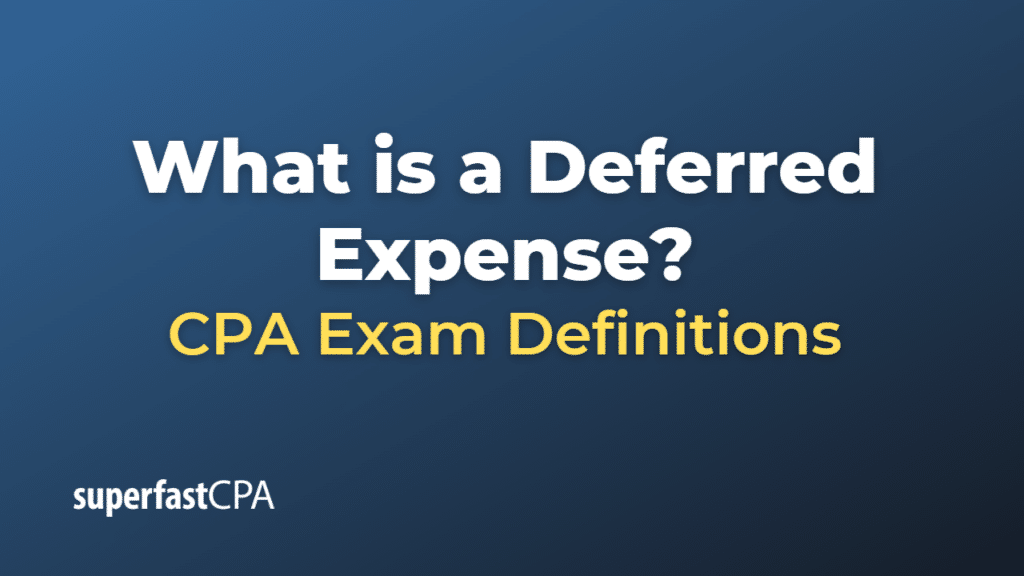Deferred Expense
A deferred expense, also known as a prepaid expense, is a cost that a company has paid for in advance of actually receiving the benefit of the goods or services. These costs are considered assets because they will provide future economic benefits.
When a company pays for a cost in advance, it records the amount as a deferred expense on its balance sheet, in an asset account. As the company utilizes the goods or services, it gradually reduces the deferred expense and recognizes the amount as an expense on its income statement.
This process ensures that expenses are recognized in the correct period according to the matching principle, which is a key concept in accrual accounting. The matching principle states that an expense should be recognized in the period in which the associated revenue is earned, regardless of when the payment is made.
Common examples of deferred expenses include prepaid rent, prepaid insurance, and prepaid subscriptions. For instance, if a company pays in advance for a year’s worth of insurance coverage, it would initially record the payment as a deferred expense. Then, each month, it would recognize a portion of the insurance cost as an expense.
Example of a Deferred Expense
Let’s consider a simple example involving prepaid insurance, a common type of deferred expense.
Suppose a company pays $12,000 in January for an insurance policy that covers the entire year. This is a deferred expense, or prepaid expense, because the company will receive the benefit of the insurance coverage over the next 12 months.
Here’s how the company would record this transaction in its accounting records:
On Payment Date (January): The company would decrease (debit) its cash account by $12,000 to reflect the payment. At the same time, it would increase (debit) its Prepaid Insurance account (an asset account) by $12,000 to reflect the future benefit it will receive from the insurance coverage.
The journal entry would look like this:
- Debit Prepaid Insurance $12,000
- Credit Cash $12,000
Each Month Throughout the Year: Each month, the company would recognize a portion of the insurance expense and reduce its Prepaid Insurance account accordingly. Since the insurance coverage extends over 12 months, the company would recognize $1,000 of insurance expense each month ($12,000 / 12 months).
The monthly journal entry would look like this:
- Debit Insurance Expense $1,000
- Credit Prepaid Insurance $1,000
By the end of the year, the entire $12,000 would have been recognized as insurance expense on the company’s income statement, and the balance in the Prepaid Insurance account would be $0, reflecting the fact that the benefit of the insurance coverage has been fully utilized.













